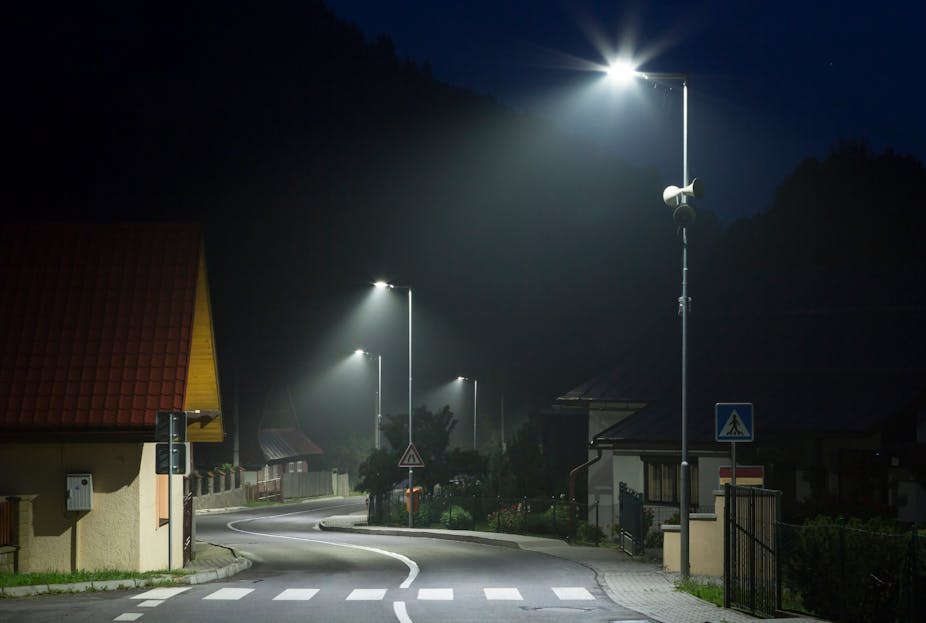As cities and towns across the world look for ways to save energy, LED streetlights have become an increasingly popular choice. Long-lasting and efficient, LED street lights are transforming the way that we light up our streets at night while helping us reduce our environmental impact.
This article will explore how LED street lights are revolutionizing outdoor lighting with their longevity and durability, as well as how they can be used to help create a greener future.
The Benefits of LED Street Lighting

LED street lighting is a long-term solution for cities and municipalities that are looking to improve their public infrastructure. Not only do LED lights provide brighter illumination, but they also last longer and require less maintenance than traditional incandescent or fluorescent bulbs. This means fewer trips up ladders to replace burned-out lightbulbs, as well as reduced power bills from energy savings that come with LEDs and more efficient operation.
Additionally, LED street lighting can be easily customized to meet the specific needs of an area, allowing for better control over the intensity of lighting depending on traffic patterns and other factors. The improved safety and security provided by these custom settings make it no surprise why LED street lighting has become such a popular choice in many communities around the world.
Examining the Cost Savings and Energy Efficiency of LEDs
LED street lights offer a wide range of advantages that make them an attractive choice for many municipalities, chief among which are their cost savings and energy efficiency. For cities looking to reduce costs while also promoting green technology, LEDs provide an ideal solution.
By leveraging the power of LED lighting technology, communities can enjoy lower operational costs and increased energy savings over traditional lighting methods. The cost-saving potential of LED streetlights is impressive when compared to other forms of outdoor lighting options. With prices ranging from 25% – 50% less than conventional systems, municipalities benefit from reduced capital expenditure on installation and ongoing maintenance costs.
In addition, they can expect monthly electricity bills up to 70% less than those derived from halogen or high-pressure sodium lamps due to LED’s superior efficiency in converting electrical energy into light output. Furthermore, LEDs tend to be more environmentally friendly with significantly lower CO2 emissions per year when compared with alternative streetlights such as high-pressure sodium or metal halide lamps – making them a great option for communities seeking greener technologies without sacrificing any quality in terms of illumination levels or life span expectancy.
Coupled with much longer lamp life spans (upwards of 15 years) it is easy to see why so many towns are now opting for this increasingly popular form of outdoor lighting solutions.
Evaluating LED Light Quality and Safety Standards

When evaluating LED light quality and safety standards, it is important to understand the potential risks posed by their use. While these lights may offer an energy-efficient option for illuminating streets and roads, they must always meet certain regulatory requirements to ensure that they are safe for public use.
This includes considering the effects of glare, flicker, radiation exposure, and electromagnetic interference on both people and the environment. Additionally, manufacturers must guarantee a minimum level of brightness output from each bulb as well as a warranty period that guarantees its performance over time.
Finally, assessing the overall life expectancy of LED streetlights is essential in determining whether or not they can provide long-term solutions for outdoor lighting needs.
Investigating the Potential Impact on Cities Going Green with LEDs
As cities across the globe are turning to LED streetlights, it is important to understand the potential impacts they may have. LEDs offer an array of benefits over traditional lighting options such as longer lifespans, improved energy efficiency, and reduced maintenance costs.
However, their use also brings up questions such as whether or not they can cause light pollution or if there might be any adverse effects on city wildlife. By investigating these questions and more, we can better assess how going green with LEDs could potentially affect our cities.
LEDs provide a host of advantages when compared to other forms of street lighting but also come with some drawbacks that need to be taken into consideration before widespread adoption occurs. For starters, LED lights generate a lot of glare which makes them less ideal for residential areas where people want a softer glow at night time.
Additionally, depending on the design and placement of the lights they can cause light pollution in certain areas particularly those located near natural habitats like parks or forests. It is also important to consider how shorter wavelengths used in LED lighting could impact birds and other animals who rely heavily on moonlight for navigation purposes during migration season. Overall there are many positives associated with using LEDs for street lighting purposes but it’s essential that we thoroughly assess its potential impacts before committing fully to this technology throughout our cities nationwide.
Careful research needs to be conducted into both short-term and long-term effects so that decision-makers have accurate information available when considering investing in this type of sustainable infrastructure solution

Conclusion
LED streetlights are truly a shining example of the longevity and durability of modern lighting technology. They offer improved visibility, increased energy efficiency, and cost savings to municipalities across the world.
Their life expectancy is much longer than that of conventional bulbs, making them an ideal choice for long-term investments in outdoor lighting solutions. As LED technology continues to improve over time, these lights will only become more reliable and efficient sources of illumination for cities everywhere.

